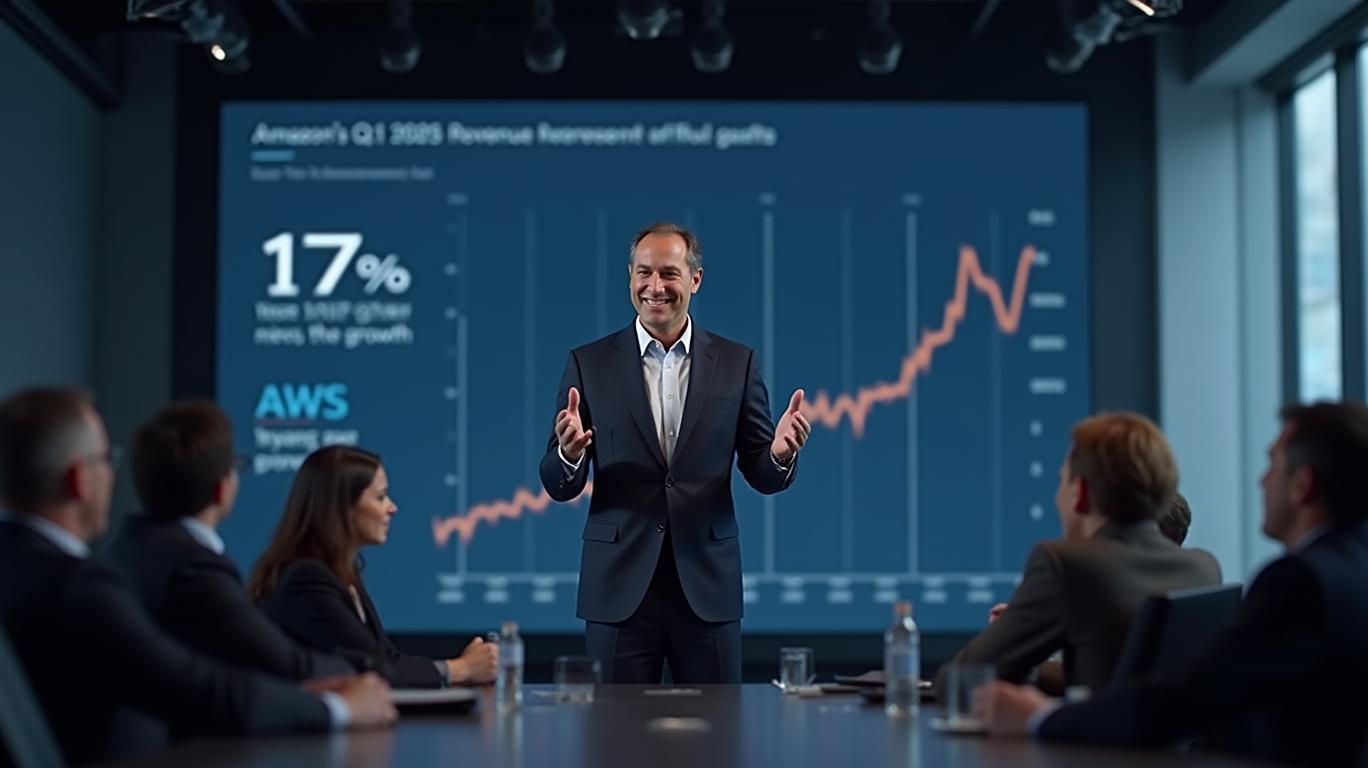Think Amazon Is Expensive? These 3 Charts Might Change Your Mind
Amazon (AMZN) has long been a polarizing stock. Critics argue its market cap of $2.3 trillion reflects overvaluation, citing a price-to-earnings ratio (P/E) of 30.6x and a recent dip in free cash flow. But dig deeper into the numbers, and a compelling case emerges for why Amazon’s valuation isn’t as extreme as it seems. Let’s unpack three key charts that tell a different story.
1. Revenue Growth: A Diversified Engine of Profit

Amazon’s total net sales rose 9% to $155.7 billion in Q1 2025, but the real story lies in its segments. AWS, Amazon’s cloud division, grew 17% to $29.3 billion, driven by AI tools like Bedrock and enterprise adoption. Meanwhile, North America sales increased 8% to $92.9 billion, and International sales rose 5% (8% excluding forex headwinds).
This diversification is critical. AWS now contributes 19% of total revenue and generates 62% of operating income. Its 23% operating margin dwarfs the 8% margin in North America, creating a high-margin flywheel.
The data shows AWS has outpaced retail segments for five years straight, turning
2. Valuation Metrics: A Discount to Intrinsic Worth
Critics point to Amazon’s 30.6x P/E ratio as evidence of overvaluation. But this ignores two facts: Amazon’s growth rate and its discounted cash flow (DCF) value.
- Growth vs. Peers: Amazon’s P/E is 62% higher than the global retail sector average of 19.4x. But its 14.9% earnings growth rate (vs. 9.6% for Alibaba and 8.7% for JD.com) justifies a premium.
- DCF Reality: A DCF model values Amazon at $295.89 per share, 35.8% higher than its current price of $190. This gap exists because the market underappreciates AWS’s scale and Amazon’s AI investments (e.g., Nova Sonic, Nova Premier).
The chart shows Amazon trades at a premium to peers—but its growth and cash flow justify it. Even at 30.6x P/E, Amazon’s valuation is reasonable if AWS continues its 17% growth trajectory.
3. Cash Flow: Investing for the Future
Amazon’s free cash flow (FCF) dipped 48% to $25.9 billion in 2024 due to $87.9 billion in capex. But this isn’t a sign of weakness—it’s a strategic bet on long-term growth.
- Capex Allocation:
- $4 billion by 2026 for rural delivery infrastructure.
- $1 billion+ annually for Project Kuiper, a satellite network to serve 4 billion unconnected people.
- AWS expansion: Including telecom cloud infrastructure and AI tools.
The payoff is already visible. AWS’s operating income hit $11.5 billion in Q1 2025, up 23% year-over-year. Meanwhile, Amazon’s operating cash flow rose 15% to $113.9 billion over 12 months, a metric that excludes capex-heavy investments.
The chart reveals FCF declining as capex soars—but this is intentional. Amazon is building infrastructure to dominate e-commerce, cloud, and AI for decades. The market may penalize FCF today, but the payoff is decades of recurring revenue.
Conclusion: Why Amazon’s Valuation Holds Up
Amazon’s stock faces skepticism because of its size and valuation. But three key metrics tell a different story:
- AWS Dominance: A 17% growth engine with $30 billion in quarterly revenue and 62% operating margins.
- DCF Discount: The stock trades 35% below its intrinsic value, a gap that won’t last if AWS and AI deliver.
- Strategic Capex: Investments in delivery, satellites, and AI are laying groundwork for future dominance, not squandering cash.
Analysts agree: the 12-month consensus price target of $239.53 (26% above current levels) reflects confidence in this thesis. Even with risks like rising competition or economic slowdowns, Amazon’s scale and innovation make it a buy at today’s price.
The charts don’t lie: Amazon isn’t overvalued—it’s an undervalued growth giant.


Comments
No comments yet